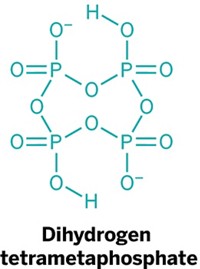Advertisement
Grab your lab coat. Let's get started
Welcome!
Welcome!
Create an account below to get 6 C&EN articles per month, receive newsletters and more - all free.
It seems this is your first time logging in online. Please enter the following information to continue.
As an ACS member you automatically get access to this site. All we need is few more details to create your reading experience.
Not you? Sign in with a different account.
Not you? Sign in with a different account.
ERROR 1
ERROR 1
ERROR 2
ERROR 2
ERROR 2
ERROR 2
ERROR 2
Password and Confirm password must match.
If you have an ACS member number, please enter it here so we can link this account to your membership. (optional)
ERROR 2
ACS values your privacy. By submitting your information, you are gaining access to C&EN and subscribing to our weekly newsletter. We use the information you provide to make your reading experience better, and we will never sell your data to third party members.
Environment
Defluorinating Bioaccumulative PFOS
April 7, 2008
| A version of this story appeared in
Volume 86, Issue 14
Perfluorooctane sulfonate (PFOS) has been used as an ingredient in many industrial and consumer products such as surfactants and fire-fighting foams. Some companies stopped manufacturing the persistent and bioaccumulative chemical nearly a decade ago, and little is known about its environmental degradation pathway. Reyes Sierra-Alvarez and colleagues at the University of Arizona, Tucson, have shown for the first time that vitamin B-12, a cobalt-based macrocycle, can catalyze the partial defluorination of PFOS (Environ. Sci. Technol., DOI: 10.1021/es702842q). Although vitamin B-12 might seem like a surprising reagent in this context, the researchers were aware that most known reductive dehalogenase enzymes depend on vitamin B-12 to help cleave halogens. They suggest that microbes that produce vitamin B-12 might be able to break down PFOS in the environment. In lab tests, the researchers monitored PFOS in the presence of vitamin B-12 and a reducing agent, observing fluoride release by monitoring the solutions with an ion-selective electrode and by 19F NMR spectroscopy. PFOS is a 75:25 mixture of linear and branched isomers, including the branched 6-CF3-PFOS shown. The team's results indicate that branched PFOS isomers are more prone to degradation than linear isomers, but the scientists have yet to elucidate a mechanism.




Join the conversation
Contact the reporter
Submit a Letter to the Editor for publication
Engage with us on Twitter